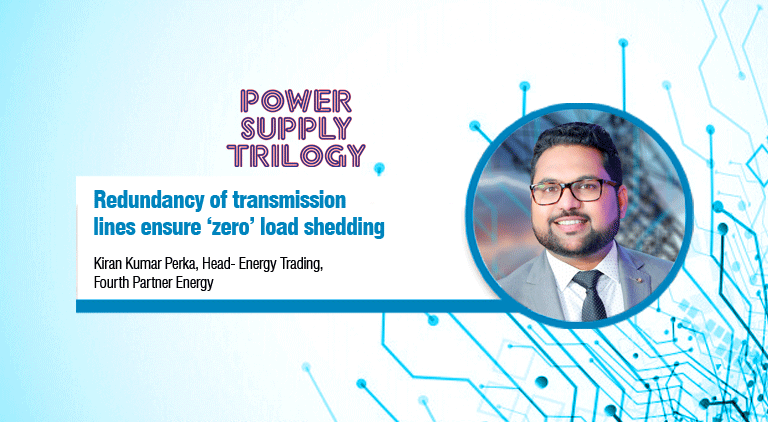Redundancy of transmission lines ensure ‘zero’ load shedding
By EPR Magazine Editorial November 18, 2019 1:39 pm IST
By EPR Magazine Editorial November 18, 2019 1:39 pm IST

Way forward is to make uniform point of connection charges and losses across the country for inter-regional transfer of electricity”
Kiran Kumar Perka, Head- Energy Trading, Fourth Partner Energy discusses about risks for power sector and measures that can be taken for better efficiency.
Private sector’s aggressive participation in power generation
The current peak demand of the country is approximately of 184 GW and the current generation capacity owned by government is approximately of 194 GW. The private sector has been moving aggressively in power generation and currently stands at about 47 per cent of total power generation (including RE).
Looking at the present scenario of the Indian market, the consumer is being treated as a king and the market has shifted to serving them with value added services and improving the efficiency of the system
What the proposed UDAY 2.0 can do!
Owing to the huge outstanding amounts of DISCOMs to the GENCOs (approx `75,000 Crore), which is affecting the sector, private companies are in a very insecure position and have taken a step back. To ensure this is not the case, the following are some measures under UDAY 2.0 that will help improve operations in the sector:
To develop a robust and integrated power system for the country, we need to mandatorily start using the latest technology for upgrading the current systems across the country. Redundancy of transmission lines for uninterrupted power supply, ensure ‘zero’ load shedding across the country.
‘Mal-operations’ by hackers
There are two kinds of risks. The first one covers physical damage where the renewable energy assets are sometimes in remote locations which make it difficult to quickly repair the damage to fences, locks and CCTV systems. Furthermore, ‘mal-operations’ of machinery by hackers are forcibly making machines perform tasks that are wasteful or end up damaging themselves. The remote management risk for RE assets that convert kinetic energy into electricity, such as wind turbines, is inherently greater over more static methods like a solar PV. The second type of risk involves threat with regards to software hacking and internet connectivity. Wind and solar farms are now controlled from great distances, usually from the sites that are often exerted through public IP addresses, which can lead to hackers’ infringement in operations, maintenance and monitoring software.
Some of the measures that can address these hazards are 24/7 monitoring systems with sensor face recognition technologies and drones to minimise and identify unauthorised access by outsiders conspiring for physical damages of assets. Also, take advantage of predictive tools, such as machine learning and artificial intelligence, to be proactive in their defence.
Way forward for EPC
Kiran Kumar Perka, Head- Energy Trading, Fourth Partner Energy
We use cookies to personalize your experience. By continuing to visit this website you agree to our Terms & Conditions, Privacy Policy and Cookie Policy.